The PolarTREC Field Experience
From September 9 - October 20, 2021, I participated in the 2021 NABOS (Nansen and Amundsen Basins Observational System) expedition on the RV Akademik Tryoshnikov. The Chief Scientist was Igor Polyakov from the University of Alaska Fairbanks (UAF) and the International Arctic Research Center (IARC), and my PolarTREC team consisted of Elena Sparrow, outreach coordinator and GLOBE facilitator from UAF, Dr. Laura Whitmore from UAF, and Dr. Lauren Kipp from Rowan University.
During the cruise, science teams collected data along a series of pre-set coordinates that were planned to correspond to prior cruises. The teams recovered a mooring and data from 2018, set out 8 new moorings, deployed 3 ITP (Ice Tethered Profilers) buoys and 10 other data buoys, completed 3 ice stations, 104 water sampling stations, 116 CTD/Rosette casts, and more than 1600 water samples (collected by each of the US and Russian teams). All of this was accomplished in sometimes very unexpected, heavy ice conditions, which forced the changing of plans almost daily (and sometimes hourly).
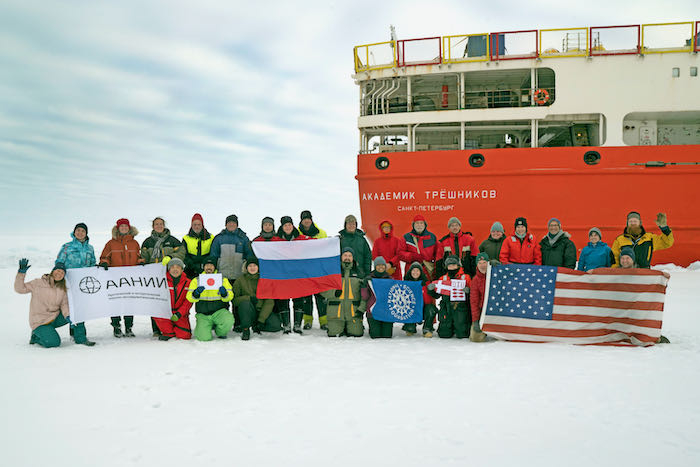
The Importance of Educator/Researcher Collaboration
Growing up, I only knew a few people who were scientists. I would have been hard pressed to name a famous living scientist at the time - these were the days before Bill Nye and Neil deGrasse Tyson. Even once I went to college, scientists worked in labs, not in the field, and certainly not on ships in the Arctic. I participated in organic chemistry and endocrinological research during my undergraduate years; however, once I entered the teaching profession, my exposure to scientists was limited. Too often, teachers do not have the opportunity to put their skills into practice, and it was not until the early 2000s that organizations such as the National Science Foundation realized that researchers needed to do better jobs at outreach and that teachers would be an excellent conduit. Since that time, research experience for teacher programs have been run in many science fields, and besides serving as professional development, they provide the time and space for teachers and researchers to collaborate. These experiences, like PolarTREC, have transformed my own professional growth and have opened up new avenues for my students.
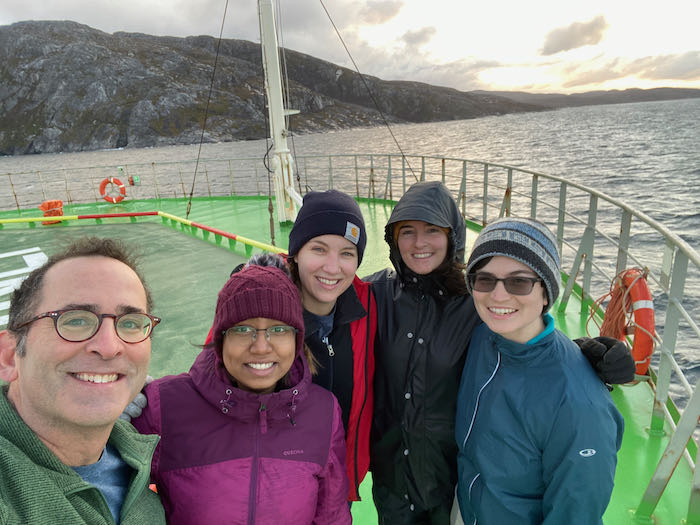
PolarTREC is one of my last opportunities to demonstrate to my students that “those who teach science, do science”. I am retiring this year and am well beyond the point in my career where it would be easy to sit back and go through the motions; however, that is not whom I am as a teacher, scientist, or person. Although I primarily teach biology, the research experience and the ability to demonstrate that to my students is an invaluable example. This project aligns with my prior background in environmental studies and Arctic issues, specifically the effects of climate change. Since my initial Arctic trip, I have incorporated polar themes into my curriculum. I have shared data and connected students with research and researchers. I have helped past students take advantage of polar opportunities. I would like to be able to provide additional frameworks and experiences for my current students and colleagues and hope to inspire them to expand their own personal and academic horizons.
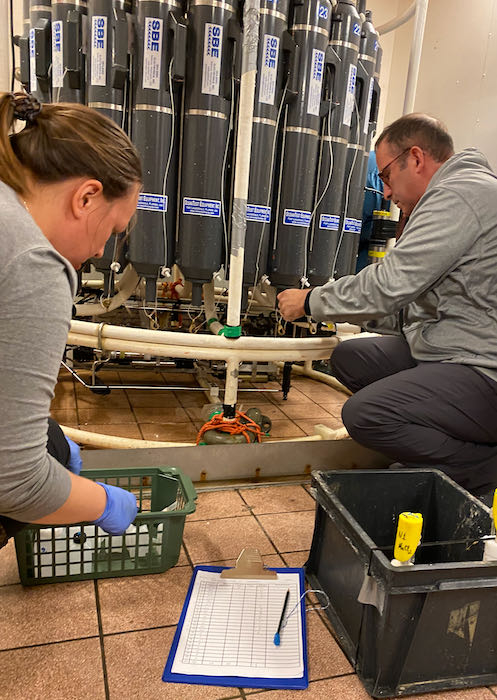
The scientists I met were truly inspirational. They led their international teams and dealt with the vagaries of working in polar regions.They had to coordinate all of the activities between the various groups. Many of the personnel were early career scientists and were female. As someone who has spent his career working with underrepresented groups and encouraging these students to pursue STEM, I was really impressed with what seems to be the “changing face” of oceanography. These researchers were all incredibly bright, dedicated, hard-working, creative, patient, excellent communicators, and truly role-model scientists. I am privileged to have had the opportunity to work with and learn from them, as were my students.
Summary of the Science
NABOS is a long-term project coordinated with the Arctic and Antarctic Research Institute (AARI) of St. Petersburg, Russia. It began in 2002 and is designed to collect information about the state of the Siberian Arctic. Teams have deployed and recovered various moorings since that time, and researchers have collected data on ice conditions, water chemistry, and physical oceanography components.
The purpose of the NABOS expeditions is to understand the role of the ocean in the Arctic, especially the role of changing sea ice conditions. The data represents observations that are also key to understanding climate change.
If you could slice the Arctic like a piece of layer cake and look at the chemical composition, you would see it has layers with different properties. The top layer is ice (fresh water), the next layer down (~0-50m) is the SML (summer mixed layer). It is a mixture of fresh and salty water and is warmer than the layer below because of atmospheric warming in the summer. Below that from ~50-100m is the CHL (cold halocline layer). This layer is salty and acts as an insulator, keeping heat from below from rising and melting the ice from the bottom. The UPP (upper halocline layer) is a mixture of saltier water, and is directly above the AW (Atlantic warm layer) - the warm water coming into the Arctic Ocean from the Atlantic Ocean. Some mixing happens during WC (winter convection which brings warmer water to the surface. The color coding shows temperature variations - blue is colder and red is warmer
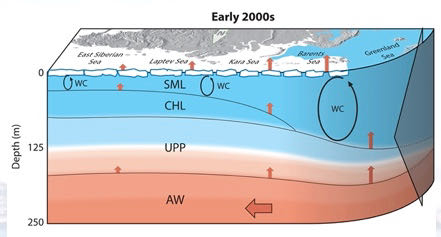
In a stable environment, salt water is more dense than fresh water, so it stays at lower depths and thus traps much of the heat below. Comparing the image from the early 2000s with the image created from data from the mid-2010s shows that the layers have shifted upward - meaning more warm Atlantic water is reaching the shallower depths - and eastward - conditions found in the Barents Sea were being seen in the Kara and Laptev Seas, thousands of miles to the east.
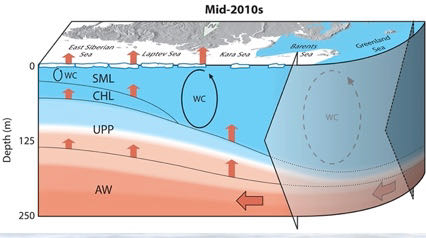
The expedition work will connect a rapidly changing climatology and the physical processes that are fundamental to the Arctic ocean. This research topic is intrinsically multidimensional, with natural variability on a wide range of spatial and temporal scales.
Linking PolarTREC Science to my Classroom and to the Public
Over the course of the expedition, I wrote 35+ journal entries (notifications sent out and shared to 165 people in 13 countries, more than 250 faculty, and about 500 students), posted updates/reminders on Twitter and Facebook when I had internet access, and conducted classroom presentations from Norway and from the ship.
I spent a great deal of time engaging with the other science teams aboard the ship. I tried to spend time with all of the various groups (mooring, CTD, Russian Chemistry Team, Ice Team, etc.) and observed and participated in their activities. I also made an effort to interview as many “Science Party” members as possible, focusing multiple journal entries on their backgrounds. I paid special attention to the questions, “How did you end up on a ship in the Arctic,” and “What advice would you give to your 16 year old self?”. These are the types of questions that I wanted my students to focus on because I wanted them to understand that at 16, I never would have predicted I would be on a ship for 6 weeks in the Arctic (for a 2nd time), and that there are many ways to be able to accomplish goals and to explore careers and locations outside the ordinary.
I also connected with my classes. Students read some of the journals and, in groups, posed questions. The scientists answered some of the questions directly, which was very motivating for the students, who appreciated the direct engagement. I was also able to conduct several sets of “live” classroom presentations, share some pictures, and have discussions from both Norway and the ship. The students really liked the interaction, and I heard from other teachers that they thought it was very “cool” to be able to speak to their teacher from the Arctic. Because of poor internet access, I was not able to hold all of the sessions that I intended.
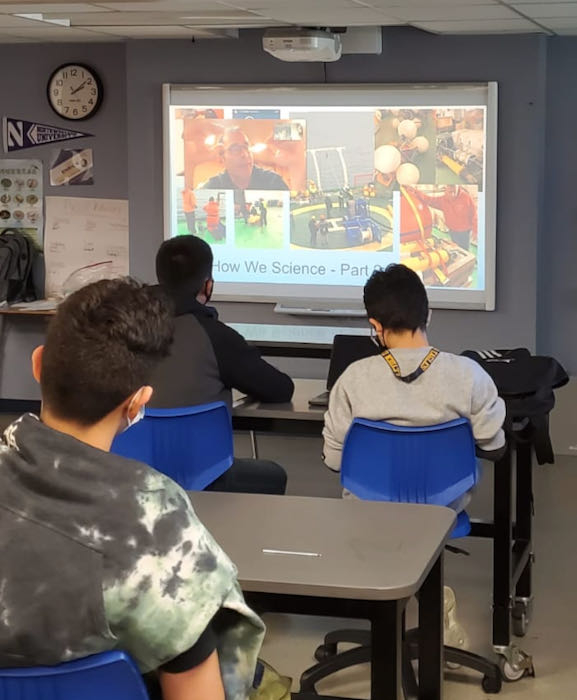
I was asked to participate in the "Float Your Boat" project and to be in charge of wooden boat deployment during our first ice station. "Float Your Boat" constructs small wooden boat blocks, burns a serial number into each, and then has students decorate them. The boats were then placed on the ice (in an Arctic 2021 design) during our 1st ice station on 10/1/21. The organization records the deployment location and tracks any boats that are later recovered. While I did not know much about the organization prior to the trip, I was very glad to help and to connect the coordinator with PolarTREC to help future PolarTREC educators use the project as another form of outreach.
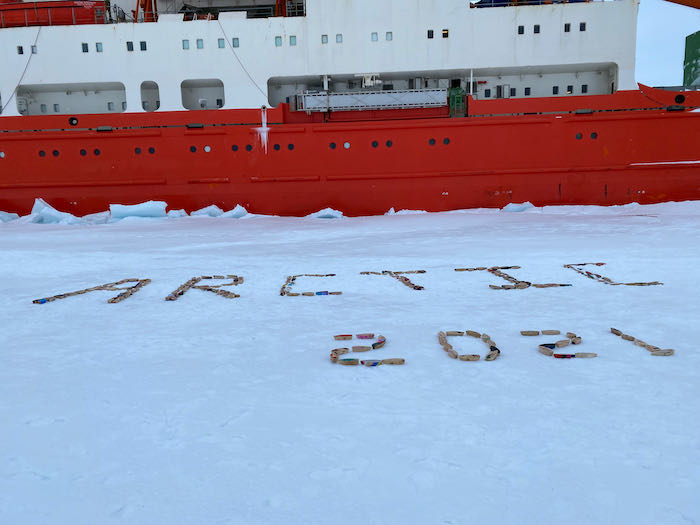
Many days, depending on the time of solar noon and light conditions, I also collected data for GLOBE (Global Learning and Observations to Benefit the Environment) on cloud cover in the Arctic. I would find a place on the deck with a clear view of the sky in all 4 directions and use the GLOBE app and Cloud Wizard tool to classify cloud types. I took pictures and uploaded them to the database once I returned. My students started to get involved in the data collection as well, but this process fell short because of the difficulty of scheduling training for the teachers at West Leyden and because of some major curricular changes that occurred once I left.
Expectation and Outcomes
Professional development opportunities like PolarTREC are transformative for both teachers and their students. My teaching continually evolves. I can honestly say that no two years have ever been the same, and with each increased opportunity, I have more to bring to my students. Having the opportunity to spend time in the Arctic allows me put my degree in Environmental Studies into active practice. Working with a team of international scientists gives me a much broader and deeper understanding of climate change and enables me to aid my students in a much more nuanced way. In class, we start each day with a student-led discussion of a current science news article, and except for COVID-19, the most popular topic has been climate change. Students regularly refer back to information in the journals or questions we discussed from the ship. They are making connections that show a much greater level of understanding, and several of them have joined the Ecology Club to focus on solutions to these environmental issues.
Students also connected to the "Arctic Cup" experiment, and my colleagues have been using the pictures and cups themselves to teach gas laws. We are working to develop a more formalized lesson plan for the future.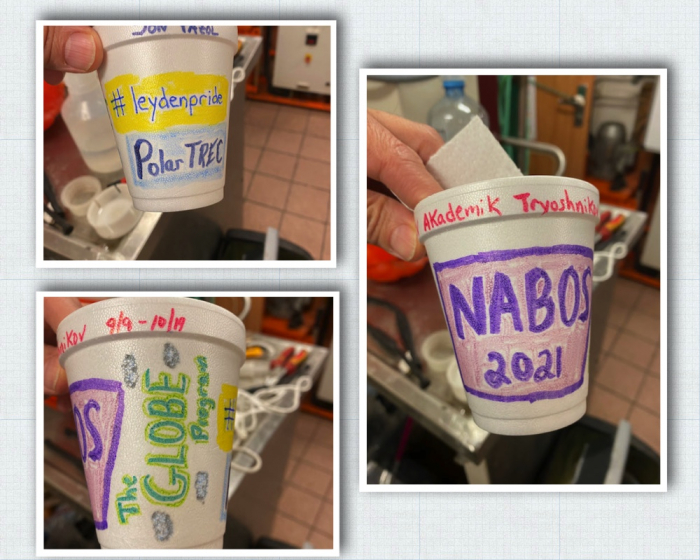
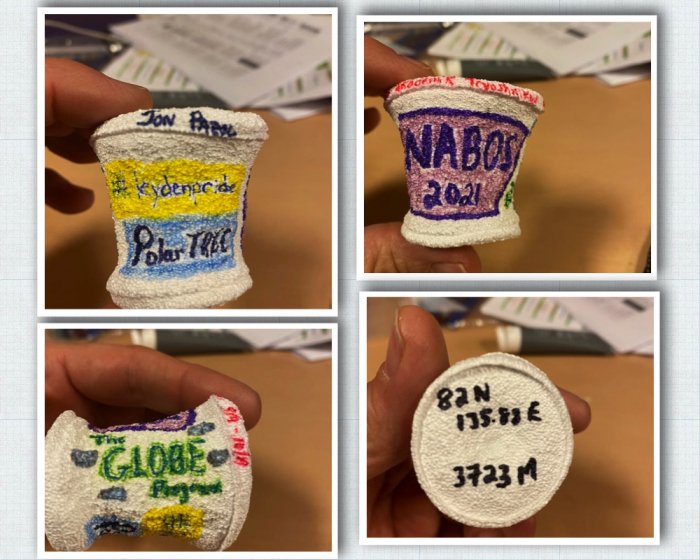
My PolarTREC expedition met my personal and professional goals of intellectual growth, science engagement, exploring the Arctic, and having an impact on my students and broader community. I am confident that these impacts will continue even after I leave a formal classroom setting.
Further Education and Outreach Opportunities
In terms of further outreach, we had a documentary filmmaker who will be creating a planetarium presentation and several other pieces. My research team did a Virtual Classroom Visit with students and other guests, and I will make it available on the PolarTREC site and on YouTube. I have scheduled classroom visits and presentations with other classrooms to discuss both the science and the Arctic. In the spring, I will also be having West Leyden Ecology and Art Club students participating in decorating boats for a "Float Your Boat" deployment on a future PolarTREC expedition.
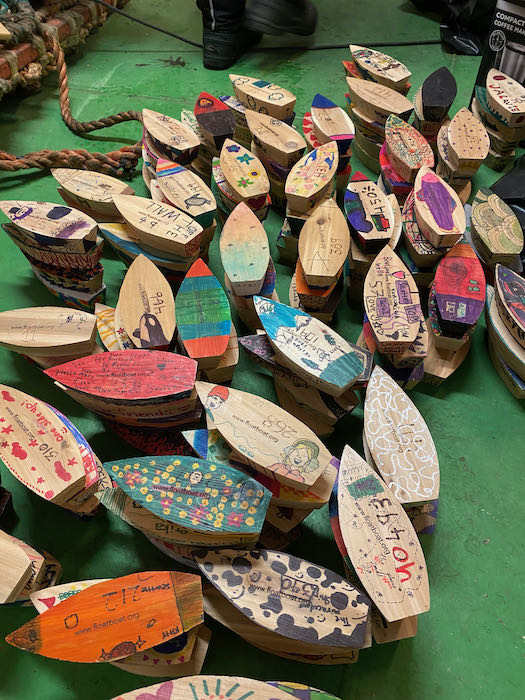
| Attachment | Size |
|---|---|
| Download Report (PDF)6.37 MB | 6.37 MB |
This program is supported by the National Science Foundation. Any opinions, findings, and conclusions or recommendations expressed by this program are those of the PIs and coordinating team, and do not necessarily reflect the views of the National Science Foundation.
